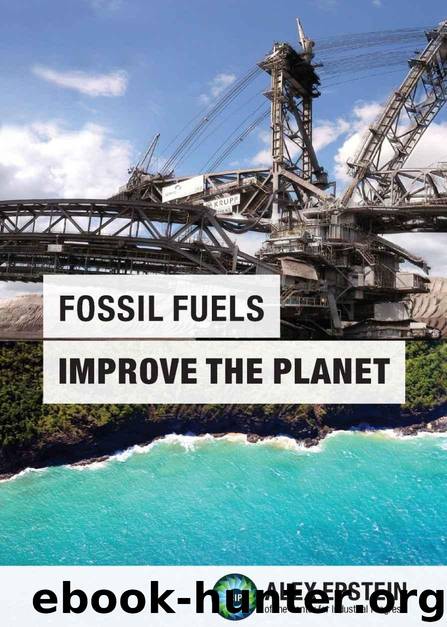Fossil Fuels Improve the Planet by Epstein Alex J. & Dennis Eric M

Author:Epstein, Alex J. & Dennis, Eric M. [Epstein, Alex J.]
Language: eng
Format: mobi
Published: 2013-07-11T16:00:00+00:00
CHAPTER 9: THE “RENEWABLE ENERGY” FALLACY
The notion of “renewable energy” has two fundamental conceptual flaws. It’s not really renewable, and it’s not really energy.
“Renewable” in most definitions approximates to something like “naturally replenished” and it often contrasted with allegedly inferior, “finite” sources. It brings to mind the image of a pizza where a slice, once eaten, magically reappears.
There is no such phenomenon in nature, though. Everything is finite. The sun and the photons and air currents it generates are not infinite; they are just all part of a very large nuclear fusion reaction. True, that nuclear fusion reaction will last billions of years, but so will the staggering amounts of untapped energy stored in every atom of our “finite” planet.
To obsess about whether a given potential energy source will last hundreds of years or billions of years is to neglect the key issue that matters to human life here and now: whether it can actually provide the usable energy that will maximize the quantity and quality of human life now. Even if there was an “infinite” energy source, if it was worse than a superior source that would last 50 years, we should of course use the superior source first—and work toward discovering an even better one. An infinite life of inferiority is hardly ideal.
This is borne out by the history of energy production. For most of human history, our amount of usable energy was barely above the amount needed to power our muscles (and during famines, not even that). There was copious amounts of unusable energy—the chemical bonds in deposits of coal, oil, and natural gas, the mechanical energy of the wind, the photons of the sun, and, greatest of all, the energy stored in all the matter around us, whose proportions were quantified when Einstein identified that E=MC2.
Every advancement in energy production consisted of taking some unusable source of energy and rendering it usable—windmills for grinding grain, water-wheels for operating simple machines, and ultimately, concentrated hydrocarbon fuels that multiplied human productivity hundreds of times over.
Hydrocarbons et al are often called “finite natural resources,” but this is a misnomer; they are not naturally a resource. They become resources—i.e., they deliver services—only insofar as they are rendered valuable by human intelligence. This is Julian Simon’s crucial identification that the human mind is “the ultimate resource” that creates new resources, including energy resources, by discovering how to extract new services out of previously useless raw materials. We should not think of unusable raw materials as resources until or unless they are rendered usable by human intelligence.
This last applies to the sun (and the wind), the ultimate source of most “renewable” energy. The vast majority of sunlight does not provide usable energy given any known technology. True, through photovoltaic conversion, a solar panel in most places can generate an electrical current of some magnitude. But who cares? A hurricane produces many h-bombs worth of mechanical energy—does that make it an energy resource?74 Not if it can’t be harnessed in a manner that provides the cheap, reliable power that we can use to meet our present and future needs.
Download
This site does not store any files on its server. We only index and link to content provided by other sites. Please contact the content providers to delete copyright contents if any and email us, we'll remove relevant links or contents immediately.
The Secret History by Donna Tartt(16624)
The Social Justice Warrior Handbook by Lisa De Pasquale(11489)
Thirteen Reasons Why by Jay Asher(7788)
This Is How You Lose Her by Junot Diaz(5773)
Weapons of Math Destruction by Cathy O'Neil(5037)
Zero to One by Peter Thiel(4824)
The Myth of the Strong Leader by Archie Brown(4789)
Promise Me, Dad by Joe Biden(4447)
Beartown by Fredrik Backman(4419)
Stone's Rules by Roger Stone(4415)
How Democracies Die by Steven Levitsky & Daniel Ziblatt(4399)
The Fire Next Time by James Baldwin(4343)
100 Deadly Skills by Clint Emerson(4079)
A Higher Loyalty: Truth, Lies, and Leadership by James Comey(4033)
Rise and Kill First by Ronen Bergman(4012)
The David Icke Guide to the Global Conspiracy (and how to end it) by David Icke(3883)
The Farm by Tom Rob Smith(3872)
Secrecy World by Jake Bernstein(3782)
The Doomsday Machine by Daniel Ellsberg(3731)
